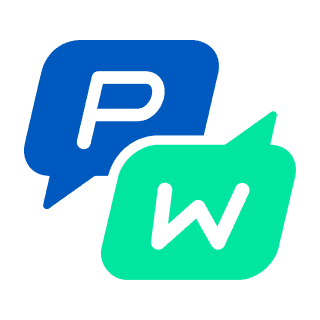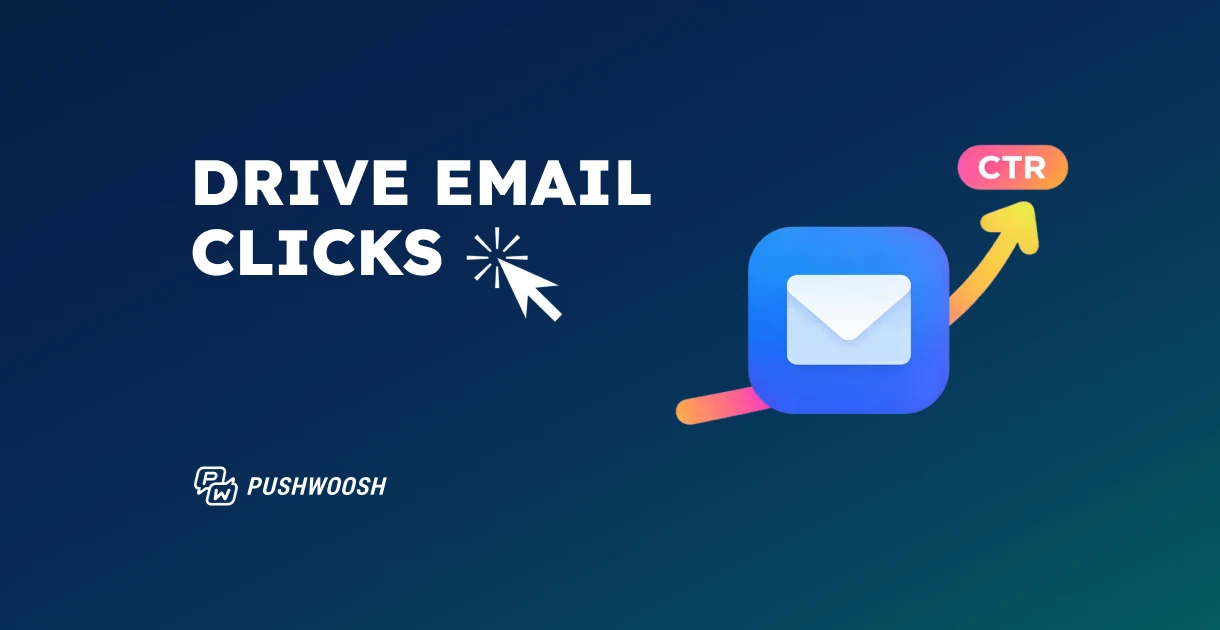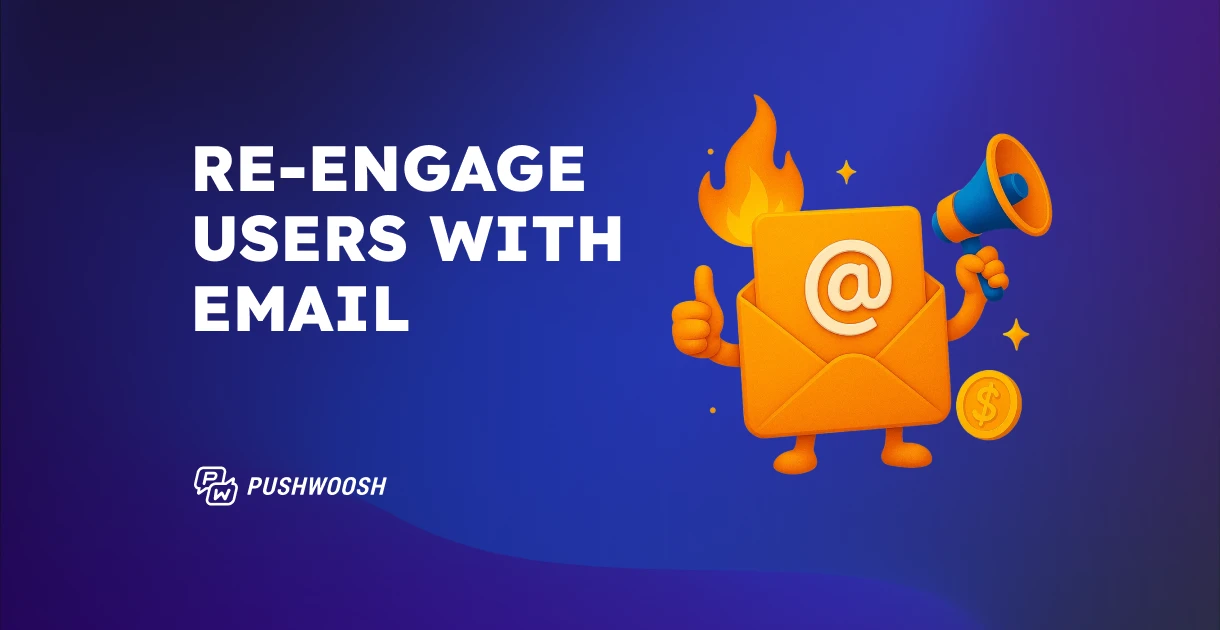Triggered email campaigns: Best practices, examples, and ready-to-use templates
Did you know that the majority of messages you send and receive daily are most likely triggered emails?
And if you’re still not leveraging this powerful tool in your email marketing strategy, now’d be the perfect time to start! Triggered emails outperform batch, nurture, and routine newsletter emails 3x, coming in hot with a 70.5% higher open rate and 152% higher CTR.
Sounds juicy? Luckily, you’re in the right place! We’ll cover everything there is to know about setting up triggered email campaigns destined to succeed, including real-life examples to get you inspired, and feature ready-to-use templates you could set up in a matter of seconds with Pushwoosh.
Let’s get started!
What is a triggered email?
A triggered email is an automated personalized message sent after a specific action or event takes place, such as making a purchase, abandoning a shopping cart, or signing up for a newsletter. Their main purpose is to provide relevant information or encourage further engagement.
Triggered email campaigns help to improve communication and build stronger relationships with your audience.
What’s the difference between a triggered and automated email?
Some would say that all triggered emails are automated but not all automated emails are triggered. But that’d be an oversimplification.
In essence, triggered emails respond to what a user does, while automated emails are sent according to a schedule as part of a broader marketing strategy. Both play essential roles in engaging with customers, improving communication, and boosting conversions, but they do so in slightly different ways.
For example, if you have a big sale scheduled in two months’ time and you’re working on an email campaign around it, it’d be automated. On the other hand, if you have an email sent out every time a person achieves a certain goal on your website—that’s triggered.
You get the drill.
Why are trigger emails so important?
Triggered campaigns come with many perks, namely being cheap and effective. But there are more hidden benefits of triggered emails than that:
- Increased engagement: Triggered emails are timely and relevant, leading to higher open and click-through rates.
- Improved conversion rates: By targeting specific behaviors, triggered emails encourage users to complete desired actions.
- Cost-effectiveness: Automated systems reduce the need for manual labor, saving time and resources.
- Enhanced customer satisfaction: Providing timely updates and information builds trust and improves the customer experience.
And while quintessential to your marketing success, these benefits are just the tip of the iceberg. The real power of triggered campaigns is that they provide a perfect balance between being customer-centric and business-growth-oriented. They don’t cost much time and effort for the company while also being more than welcomed by the recipients: the subscribers usually eagerly anticipate or directly request information delivered via triggered messages.
With that in mind, let’s move on to some examples of triggered email campaigns.
Types of triggered emails
Many different types of emails could be considered triggered. But the general division usually splits them into 2 distinct groups:
Transactional emails
A transactional email is an automated message sent to a user following a specific transaction or interaction, such as a purchase or an account update. These emails provide essential information related to the transaction and ensure smooth communication between your business and the customer.
The audience expects and directly requests these emails. No wonder that transactional emails typically have higher open rates (40–50% is considered optimal) and click rates (10–20% on average) than other email campaigns.
Now let’s take a closer look at different kinds of transactional emails.
Confirmational email example
As the name suggests, confirmation emails confirm a transaction, such as an order, a booking or a reservation, delivery time, shipment, etc. Their primary goal is to appease the customer and assure them everything goes as planned.
Take a look at this confirmation email example from TurboTax which not only notifies the recipient that their refund has been processed successfully but also provides a timeline for the next steps, to further enforce the sense of security. The company is also making good use of the email to include additional information about themselves and sneak in a promotion:
Confirmational email example by turbotax: your refund is on its way
Confirmational emails are particularly popular in e-commerce, travel and hospitality, finance, online learning, and event management industries.
Confirmational email template
If you’re unsure where to begin when crafting a confirmational email, using a pre-designed template is a smart place to start. Pushwoosh’s drag-and-drop email builder offers pre-designed templates for various use cases. They are professional, engaging, and ready to use—just swap in your content.
For example, here’s a template for a confirmation email about an order made in an e-commerce app. It includes the order number, total amount, and payment method, allowing the customer to verify that everything matches their purchase. The order number is displayed in the subject line for easy tracking later.


Security alert triggered email example
Security alert emails notify users of potential security issues, such as unauthorized account access, password changes, or suspicious activity. Their primary goal is to inform and protect the user, ensuring the security of their accounts and personal information.
Check this security email example by DoorDash, notifying a user that a new device attempted to log in to their account:

Security alert trigger email example by DoorDash
Industries that benefit from security alert emails the most are: finance and banking, software and technology, healthcare, and online services industries.
Password reset request example
This one is self-explanatory. Password-reset emails are sent to users who have requested to change or update their account password. They usually feature just a simple secure link or code that allows the user to create a new password, ensuring the account remains protected and accessible only by the authorized user.
Here’s a to-the-point example of a password reset transactional email by Vimeo:

Password reset triggered email example by Vimeo
While seemingly simple, password-reset emails rely on highly sensitive personal information and require high-end encryption and data security to function properly.
Receipt/invoice emails example
Emails containing receipts and/or invoices are sent to customers following a purchase. They aim to provide a detailed record of the transaction, including the amount paid, items bought, and any applicable taxes, etc., serving as proof of purchase and, oftentimes, the legal basis for a refund.
Uber excels at receipt emails, not only because of the content but also because they hit the deliverability goals every single time:

Transactional email with receipt example by Uber
As long as you’re selling stuff online, you need to be able to send receipts and/or invoices. However, the industries that use receipt emails the most are usually e-commerce, retail, travel, and subscription-based services.
Appointment reminder emails
Reminder emails are a great way to ensure the customer remembers about your upcoming appointment or a meeting. And they work both ways, ensuring the recipient has a chance to adjust their schedule and reducing no-shows or improving your organizational time management on the business side.
➡️ Key success metrics: Show-up rate and Appointment-to-sale conversion rate
Here’s an example of a classic transactional appointment reminder email by Booksy, sent 24 hours before the date of the visit:

Appointment reminder transactional email example
Healthcare, beauty and wellness, professional services, education, and event management industries leverage appointment reminder emails the most.
To send an appointment reminder email, Pushwoosh provides all the required tools. There is even a ready-to-use template including personalized elements and the necessary structure:

A reminder will be sent on each customer’s personal time, thanks to Pushwoosh’s dynamic scheduling feature. See it in action:
Marketing emails
A marketing triggered email is an automated message sent in response to user behavior or predefined criteria aimed at engaging, nurturing, or converting potential customers. These emails are designed to promote products, services, or content by delivering relevant offers to the right audience at the right time.
Marketing emails help you build relationships, drive engagement, and increase conversions by providing value-driven content tailored to the recipient’s interests and actions.
Unlike transactional emails, marketing communications are rarely anticipated, hence their performance is often lower.
Welcome emails example
Welcome emails greet new subscribers after they sign up, introducing them to the brand and its offerings. This is your opportunity to make a positive first impression, providing users with essential information and encouraging them to explore more.
Here’s an exemplary welcome email from Sea of Thieves, not only introducing the player to the game’s world but also providing invaluable resources to help navigate it better:

Sea of Thieves welcome email example
You can leverage welcome emails as part of your newsletter journey or build a more robust onboarding campaign starting with a sweet, value-driven email explaining what to expect.
➡️ Key success metric: Early-stage engagement and retention rates
Welcome email template
Here’s an example of an effective welcome email template in Pushwoosh’s drag-and-drop builder. It engages users visually and encourages them to take their first actions in the app. Personalization by name, appealing illustrations, multiple CTA buttons, and links to helpful resources for new users all contribute to its effectiveness.
The benefit of using this structure? Increased activation rates!

Abandoned cart trigger email example
As you surely know, abandoned cart emails remind users about items they left in their online shopping cart without completing the purchase. These emails are known for incredible performance (44.1% open rate) and impressive impact on recovering lost opportunities (29.9%).
➡️ Key success metric: Revenue generated
For example, HUX goes directly for the sale, using their abandoned cart email to remind the buyer how quick and effortless the transaction can be:

Naturally, abandoned cart emails are most used in e-commerce, retail, travel, and hospitality fields.
Abandoned cart email template
Here’s an abandoned cart email template offered to Pushwoosh users. It comes with an attention-grabbing CTA button and built-in personalization. You can either use the template as is or customize it in the builder to reflect your brand’s style:


Product recommendations email example
Product recommendation emails suggest products to users based on their browsing or purchase history with your brand. Their primary goal is to enhance the shopping experience by providing personalized suggestions that align with the user’s interests.
➡️ Key success metrics: Add to cart rate, Conversion rate, and Average order value (AOV)
In this product recommendation email example, DonorsChoose NGO personalizes their content based on the user demographics and “other visitors also browsed” tag:
Product recommendation marketing triggered email example by DonorsChoose
Product recommendation emails have proven to be able to increase the CTR by 300%, making them an invaluable asset in your marketing strategy.
Re-engagement trigger email example
Re-engagement emails reach out to inactive users or subscribers who haven’t interacted with the brand for a while. They aim to reignite interest and encourage users to come back.
You can set up a re-engagement email to be triggered after a certain period of inactivity on the user’s end to achieve the best results.
➡️ Key success metrics: Reactivation rate, Features used or Products viewed
For example, here Strava is leveraging re-engagement email to drive the user back to the app and promotes a possibly underused feature. This campaign works because it directly addresses the user’s need/struggle – not having access to a personal trainer:

Strava’s re-engagement email example
Re-engagement email template
If you’re looking for inspiration to create your re-engagement email, a ready-made template can be a great starting point. For example, here’s one from Pushwoosh’s email templates library. It entices users to return to the game by promising them additional rewards:
 👉**To use the template:** Log in or Sign up for Pushwoosh, go to **Content** > **Email Content** > press ‘Create email content’ > press ‘Choose a template.’ Several email templates will then appear, ready to use as is or customize. The one above is called ‘Re-engagement.‘
👉**To use the template:** Log in or Sign up for Pushwoosh, go to **Content** > **Email Content** > press ‘Create email content’ > press ‘Choose a template.’ Several email templates will then appear, ready to use as is or customize. The one above is called ‘Re-engagement.‘
Follow-up emails example
Follow-up emails are sent in response to specific actions or events, such as attending a webinar or signing up for an online training session. They provide relevant information or follow-up based on the event interaction and engage new contacts add subscribers to your marketing list.
➡️ Key success metrics: User activation and engagement rates
Here’s a typical post-webinar follow-up email example by Arrows, hoping to connect with the lead by featuring the event’s recording:

Follow-up email example by Arrows
These emails are particularly popular with online education and personal growth brands.
Loyalty program email example
That’s right! These kinds of communications can be triggered, too!
Loyalty program emails aim to increase customer retention by encouraging continuous engagement with the brand. It is achieved by updating members on their rewards status, exclusive offers, and program benefits.
➡️ Key success metrics: Customer retention, Redemption rate, and Repeat purchase rate
For example, you can set up a trigger to send a loyalty email whenever the user levels up (or down) in your tiers and provide suggestions on how to avoid that, like DoorDash (again!) did here:

DoorDash’s loyalty program email example
Feedback and survey email example
This type of email is among the most underutilized ones. Feedback and survey emails request customer input about their experiences with your product or service. As a result, you foster brand loyalty and gather valuable insights.
➡️ Key success metrics: Customer satisfaction and CLV
Director of Sales and Customer Success @ Survicate
To effectively leverage survey emails, the focus should be on targeting customers at key touchpoints in their journey. These could include post-purchase, after onboarding, following customer support interactions, or when a subscription is about to renew.
For example, sending a survey after a customer has made a purchase allows you to gauge immediate satisfaction and address any concerns while the experience is fresh in their mind. Similarly, a survey following a support interaction can help ensure that any issues were resolved to the customer’s satisfaction.
A survey email should be concise and clear. Include a clear subject line that reflects the purpose of the survey, and ensure the email content highlights the value of the customer’s feedback. If possible, offering a small incentive could help to encourage participation.
Here’s an example by Nocibe, requesting feedback following the transaction and leveraging the engagement after six months upon the order’s successful delivery to offer refill:
Feedback request email example
7 Best practices for successful triggered email marketing campaigns
As you can see, there are plenty of ways to leverage triggered emails to grow your business’ effectiveness. The real question is how to maximize the effectiveness of every single one of them.
Here are 7 battle-tested strategies to hit your deliverability and email CTR goals every time.
1. Set a clear goal for each trigger email campaign
Sending emails for the sake of sending emails is what kills your performance. People already feel like they receive all too many communications and what’s worse is that most of those are not relevant to them.
That’s why it’s important that you only send triggered emails when expected. Having a clear campaign goal and carefully tracking its performance is crucial.
For example, you thought your re-engagement email would drive people back to your app and improve engagement, but one week in, you discover that it causes more people to unsubscribe, than to click on your links. Never hesitate to pause and edit your email campaign if you see it doesn’t drive the results you expected!

In Pushwoosh, you can monitor your email performance in real-time while the campaign is running, both overall and for each individual email. If you notice that an email isn’t reaching its goal (not delivering the reactivation conversions you expected), you can pause it and fine-tune the message.
2. Use customer data thoughtfully
Triggered emails are only powerful when they are personalized to the specific customer’s needs and expectations. Unfortunately, that also means they come with different data privacy pitfalls.
So, what kind of personal data should you pay particular attention to when it comes to triggered emails?
- Location: You may want to use it to send personalized offers for their region; however, you should always obtain explicit consent beforehand to avoid any legal issues.
- Browsing and purchase history: Commonly utilized for product recommendations, abusing this information may raise concerns if users are unaware of tracking.
- Demographic information: Employed for targeted campaigns, demographic data can be considered sensitive without explicit user permission.
It can all be easily remedied by ensuring transparency in your data collection processes. Just adhere to privacy regulations like GDPR and CCPA, and you’ll be able to maintain customer trust and avoid any legal implications!
Unified customer data transforms the strategy behind triggered email campaigns for any business. Combining real-time behavioral events and user attributes into a single profile enables marketers to react to user actions in the moment, not just send communications to static lists.
The most predictive signals our customers use include recent engagement (opens, clicks), session recency, and traits like purchase propensity and predicted lifetime value.
When this data flows from Twilio Segment into Pushwoosh, you can trigger emails based on actions like recent purchases, cart abandonment, or even optimal engagement windows, all tailored to user-level details.
3. Personalize your emails with segmentation
And once you’ve mastered data collection and processing, it’s time to put it to a good use during the segmentation stage of your campaigns.
Even though triggered emails are automated, you still can—and should—leverage content personalization when possible, going beyond triggers if the case allows. For example, you can use the opportunity to enhance your transactional confirmation emails with a unique discount code for previously browsed products.
Make sure you consider user attributes, such as demographic and behavioral data, when setting up your campaign.
4. Schedule your campaigns carefully
Knowing when to send your campaigns is just as important as who you’re sending them to. Even though triggered emails go out automatically, you still have some control over the scheduling.
- Transactional emails usually need to go out immediately. You might want to avoid the traditional 2–3 minute delay many ESPs suggest. If a user wants to reset their password, they likely don’t have those 2–3 minutes–waiting will only result in frustration!
- Marketing emails allow some more tweaking. Even though your trigger could be timed, you don’t have to send it right away. Say you want to welcome a new subscriber, but it’s 2 AM and they’ll likely forget about your message. Why not send your welcome email the next morning when the reader is more likely to be engaged?

Leverage Pushwoosh’s functionalities like Scheduled Launch and Best time to send, and experiment with the recipients’ timezones to optimize your campaigns’ send times and maximize their effectiveness!
Here’s an example of a scheduled recurring campaign in Pushwoosh. The platform automatically sends emails to new users every week at 10 AM according to their individual time zones:
Scheduled email campaign in Pushwoosh

5. Always optimize for mobile
Depending on your niche, most of your audience may engage with your emails from mobile much more than desktop. That’s why it’s paramount to ensure the email you’ve undoubtedly designed on your work laptop looks and feels equally great when accessed from a mobile device.
Use the preview feature to see how your email will look on a smaller screen and always test-send your emails to ensure they are rendered correctly on all devices. It will save you a lot of headaches and will make your subscribers a little more excited whenever they see your brand name popping up in their inbox, oftentimes translating into higher customer retention.
6. Provide a clear call to action
Remember the goal you’ve had for your campaign we’ve mentioned? Make sure the main CTA in your triggered email is aligned with that goal.
- Sending an abandoned cart email? Go for “Complete the purchase” instead of “Buy now”.
- Asking for feedback? “Leave a review” works better than “Tell us why”.
- Alerting an unexpected account login? A simple “Yes, it’s me” should do.
And if you’re struggling with the best copy for the most converting CTA, there’s always a friendly AI tool that’s got your back.
7. Always aim to meet customer expectations first
Last but not least, keep in mind that triggered emails are so successful because they’re meant to serve the customer, not the business. So set your campaigns with that in mind and you’re bound to succeed!











